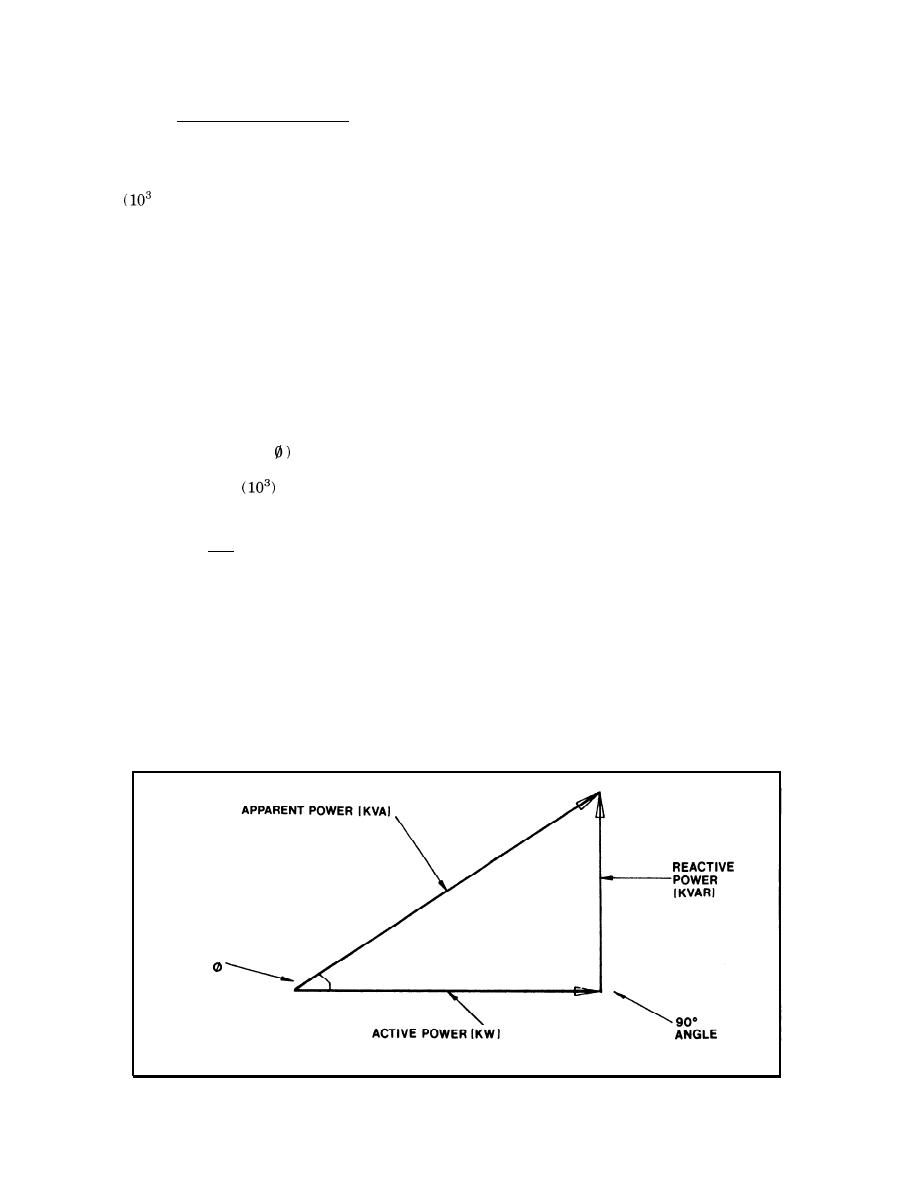

Custom Search
|
|

|
||
 TM 5-685/NAVFAC MO-912
Frequency = (Speed in rpm) (Pairs of poles)
generator fields is provided in several forms includ-
(60 Hertz)
60
ing field-flash voltage from storage batteries and
e. Power. Power is the term used to describe the
voltage from a system of solid-state components. DC
rate at which electric energy is delivered by a gen-
generators are either separately excited or self-
erator and it is usually expressed in watts or kilo-
excited.
watts
watts).
b. Excitation systems in current use include
(1) Watts. Watt s are units of active or working
direct-connected or gear-connected shaft-driven DC
power, computed as follows: volts x measured or
generators, belt-driven or separate prime mover or
apparent amperes x power factor.
motor-driven DC generators, and DC supplied
(2) Volt a mperes reactance (Mars). Vars are
through static rectifiers.
units of reactive or nonworking power (1 var = 1
c. The brush-type exciter can be mounted on the
reactive volt-ampere).
same shaft as the AC generator armature or can be
(3) Power factor. Power factor is the ratio of
housed separately from, but adjacent to, the genera-
active or working power divided by apparent power.
tor (see fig 4-2). When it is housed separately, the
The relationship of apparent power, active power,
exciter is rotated by the AC generator through a
and reactive power is shown in figure 4-10. The
hypotenuse represents apparent power, the base
drive belt.
represents active power, and the altitude of the
d. The distinguishing feature of the brush-type
power triangle represents reactive power. Power
generator is that stationary brushes are used to
factor (the cosine of angle
is a unitless number
transfer the DC exciting current to the rotating
which can be expressed in per unit or in percentage.
generator field. Current transfer is made via rotat-
For convenience, kilo
is often used with the
ing slip rings (collector rings) that are in contact
terms volt- amperes, watts and vars in order to
with the brushes.
reduce the number of significant digits.
e. Each collector ring is a hardened-steel forging
% Power Factor = kW x 100
that is mounted on the exciter shaft. Two collector
kVA
rings are used on each exciter, each ring is fully
4-8. Exciters.
insulated from the shaft and each other. The inner
ring is usually wired for negative polarity, the outer
a. An AC or DC generator requires direct current
ring for positive polarity.
to energize its magnetic field. The DC field current
f. A rotating-rectifier exciter is one example of
is obtained from a separate source called an exciter.
brushless field excitation. In rotating-rectifier excit-
Either rotating or static-type exciters are used for
ers, the brushes and slip rings are replaced by a
AC power generation systems. There are two types
rotating, solid-state rectifier assembly (see fig 4-4).
of rotating exciters: brush and brushless. The pri-
The exciter armature, generator rotating assembly,
mary difference between brush and brushless excit-
ers is the method used to transfer DC exciting cur-
and rectifier assembly are mounted on a common
ren t to the generator fields. Static excitation for the
shaft. The rectifier assembly rotates with, but is
ANGLE
Figure 4-10. Power triangle.
4-8
|
 |
|
 |
||